Similar Posts
Hierodeacon Herman (Majkrzak), Chapel Music Director and Lecturer in Liturgical Music at Saint Vladimir’s Seminary, has started a small ministry during this Nativity fast – a series of Facebook posts highlighting lesser-known hymns and carols from the Western tradition. You can enjoy his posts here: Fr. Herman’s Choral Advent Calendar. We thought this a good opportunity to ask him to share some thoughts on Western hymns and carols, and what role they can play in Orthodoxy.
A. Gould: Father Herman, to begin please tell us about your Facebook page, “Fr Herman’s Choral Advent Calendar.”
Hdn Herman: Andrew, thanks for hosting me at Orthodox Arts Journal. I think many of your readers would be interested in checking out what I’m calling my “choral Advent calendar.” I’ve based the name for the page on the delightful old German Advent calendars where each day leading up to Christmas you open a little door that reveals a holy image or a scripture verse or the like. My page is the same idea, but each day it’s a link to a piece of choral music. And with each day’s post, I include a description or commentary, and the text of the piece. My hope is that people will take this fast as an opportunity to listen to music attentively – i.e., will learn something about a piece before listening, and will listen to it with their undivided attention, while not doing anything else, and while reading along with the text.
Most of the pieces I’m posting are from the repertoire of Western choral music, especially carols and hymns, the subject of this interview. I do occasionally post Orthodox liturgical music as well, and in any case the posts are following the Orthodox liturgical calendar throughout the fast. For those on the Old Calendar, I’ll be refreshing each post thirteen days later, so you can follow and be sync liturgically with your parish.
You don’t need to have a Facebook account to access the posts, but for those who aren’t on Facebook, I also have an email list – write the OAJ editor if you’d like to be added, and tell him whether you want the new calendar or the old calendar posts.
A Gould: A lot of people, including Christians, tend to be fed up with Christmas music. It’s everywhere, in stores, in offices, and on the radio, and so much of it is cheap and just helps in the commercialization and secularization of this important Christian holy day. It can be easy to become cynical or jaded. You must have some thoughts on this, given how much you think about carols.
Hdn. Herman: Absolutely, Andrew. I think we should really make an effort not to be cynical about Christmas. The world has tried to spoil Christmas in so many ways, but we shouldn’t let that effort triumph in our own lives, in our own hearts.
I prefer to look at the presence of carols in stores and malls as one of the last vestiges of Christianity in the public space here in America, and I think we should value this and build on it. Yes, the carols are sometimes cheap and often annoying, but it’s not all “Jingle Bell Rock”! I’m always delighted when I go into a department store in 2015 and hear songs about Christ’s virgin birth! Even if, as is usually the case, I don’t like the musical arrangements, I’m still so happy to hear them. Some Christians complain when they start hearing carols and seeing Christmas decorations long before Christmas. Okay, maybe this is not ideal, but, you know, really I’d prefer to go into a store on November 1st and hear a song about Our Savior – or even Rudolph! – than a song about licentiousness, which is what we’re treated to the rest of the year.
Young adults today will probably be the last generation to have grown up somewhat familiar with a basic repertoire of a dozen or so famous carols: “The first Nowell,” “Hark, the herald-angels sing,” “Silent night,” “O come, all ye faithful,” “O come, O come, Emmanuel,” and the like. For many people, memories of early childhood Christmases are some of the purest and happiest of their lives, even if mixed with avarice or bitterness surrounding gifts, and those memories are bound up with carols like these. This means that for the next fifty years or so, these carols will have the potential to connect to a very special part of people’s lives. Our task as Orthodox Christians in a society increasingly post-Christian, but still having these vestiges of Christian memory, is to elevate these carols, to help them be a window through which people can experience something beautiful, something peaceful, and have even just a glimmer of joy and gratitude. This is especially our job if we are musicians. We should organize concerts with carols, and go caroling in our neighborhoods or at local hospitals and nursing homes. Let’s not let the devil have Christmas. It doesn’t belong to him.
A. Gould: You grew up as an Episcopalian, and you were an organist and singer in the Anglo-Catholic tradition before your conversion to Orthodoxy. How has your experience with Western liturgical music influenced your vocation as an Orthodox choir director?
Hdn Herman: Well, Andrew, when I think back to the time in my life, to early adolescence (not long before you and I first met), when I was moved to make a resolute commitment of my life to our Savior, Christ Jesus, it seems to me that it was liturgical music that the Lord used to open that door in my heart. Discovering the traditional canon of Western, and particularly English, church music inspired me to learn about and immerse myself in the more traditional forms of Western liturgy that that music was meant to accompany. So, for example, I will never forget the summer Sunday in 1991 or ’92 when for the first time I attended a solemn mass in the full Anglo-Catholic tradition. It’s a cliché, but it really was a life-changing experience to discover a much older, more full stream of liturgical tradition, largely unscathed by the banal impoverishments that the liturgical reform of the 60s had brought about in Western Christianity. I was twelve or thirteen, and I had discovered the joy of my life: traditional liturgical worship. It was traditional music that led me to take traditional liturgy seriously, and liturgy in turn inspired me to dip into theology in my early high school years. I read C.S. Lewis, Peter Kreeft, and other contemporary apologists, but then went further with Thomas Aquinas and collections of Patristic homilies. I even read a ten volume set of Anglican dogmatic theology by F.J. Hall. This all may seem far afield of your question, Andrew, but it’s not, really, because without this theological self-education I would probably never have become Orthodox. In my early college years I realized that I needed to have complete integrity and unanimity between these three great loves of my life: music, liturgy, and theology. I could not have one without the other two, and it is only in the Orthodox Church where they constitute an integral whole. I take my work as an Orthodox choir director seriously because I see what an irrevocable effect good church music had on me in middle school, and I think Orthodox church music has even greater potential to direct the lives of our young people today on the path of righteousness and salvation.
A. Gould: It is often the experience of one who converts, that at first he feels it is a complete rupture – that nothing from his old ways are compatible with Orthodoxy. But over time, we mature, and come to understand that much of what we had known in the Western Church is highly sympathetic to Orthodoxy. And we start to see that the Western and Eastern traditions are not necessarily isolated alternatives, but rather are two related sisters in the Church’s history. Each has historically depended upon the other for inspiration, and they need to do so still, if liturgical art is to remain fresh and creative. This has been my experience since my conversion, and I wonder if yours has also followed this pattern?
Hdn Herman: I think you’ve put this very well, Andrew. This is a common path for converts, and I would even say it is a necessary path, first intentionally to distinguish yourself, to set yourself apart from what the service of reception of converts calls your “former delusion,” but then, perhaps years later, to go back and reacquaint yourself with these roots, viewing them with new, Orthodox eyes.
Yes, people who convert to Orthodoxy, especially from other Christian communities, should wholeheartedly immerse themselves in and be formed by the Orthodox tradition, not just in its dogmatic and moral teachings, but in its Eastern liturgical piety, its traditions of chant, iconography, and architecture, its ascetic disciplines, its monastic ethos. (And as an aside, to really do this well, I think you need to develop some measure of affection for and familiarity with one of the cultures from which Orthodoxy came to this country and to your parish. In my case that meant the culture and faith of Russia.) This is so important, because this is the path to making Orthodoxy your own: you are completely uprooted from your previous confession, and then you’re deeply planted in the soil of the Church. And I’d say that the new convert should not be too concerned with distinguishing between what is essential and what is incidental in Eastern Orthodox practice. (And to be clear, by incidental, I don’t mean insignificant.) Such distinctions are important, and will come with time and education, but new converts are not capable of making such distinctions, really, and if they try, they may become confused and perhaps be led astray.
But later, having undergone that clear separation and having internalized the ways of one’s new home, having laid a firm foundation for one’s new identity as an Orthodox Christian, one is then able to look at traditional Western Christianity with clearer vision and with more sympathetic eyes, and one sees that there is so much there that is beautiful and true and worthy of our close attention and admiration. You’re still aware of the problems, certainly, but you no longer fixate on them. And, yes, as you say, the more you learn about Church history, the more you see that, despite the Schism, despite the dogmatic divergences, East and West have never been two isolated, watertight compartments within Christianity. It is one common culture, with its roots in the Roman Empire. There are different emphases, of course, but the family resemblances are often quite charming.
A. Gould: Regarding Western hymns and carols, how would you characterize their strengths and weaknesses as a liturgical art? What do they do really well, and what do they offer us that may be lacking in the Eastern choral traditions?
Hdn Herman: That’s a huge question, Andrew. I’ll come at it from a few different angles.
Let me begin by clarifying that Western carols are not, technically, liturgical. Though often sung in Church, their origin is not found in prescribed liturgical texts or chant books, but rather they arise out of the spontaneous devotion of Christian people. And such extra-liturgical or, perhaps, paraliturgical singing exists within Orthodox cultures as well: one thinks especially of the famous Russian and Ukrainian Christmas carols, transplanted and sung to this day with such great fervor by Yup’ik Orthodox in Alaska, of the Arabic carol for Lazarus Saturday, “Rejoice, O Bethany,” or of the many carols from Greece or Serbia, including 20th-century compositions by St Nektarios of Aegina or St Nikolai of Zhicha. So I’d want to rephrase your question and make it less about East and West and more about liturgical and non-liturgical.
Put in that light, I think it’s really important for us to nurture extra-liturgical expressions of our Faith, and singing together about Christ and his Incarnation is one of the best ways of doing this I can think of. People who sing together about joyful things become joyful themselves. You and I did this for hours on end when we were teenagers, and I think this should be a regular part of the lives of all Orthodox children, youths, and grown-ups. Singing hymns and carols together is much better than making playlists of rock music on Spotify or playing video games! The one draws us into the embrace of a centuries-old Christian culture, the other conforms us to the world.
So, what extra-liturgical music should Orthodox be singing? For English-speaking Orthodox, the answer is obvious: we have a tradition ready to go, we just have to make it our own! And I think it’s wonderful when we as Orthodox say, “Everything, anywhere, that is good and true and beautiful belongs to Christ and belongs to His Church, and so we will preserve it and pass it on because it is, in fact, ours.” We are the custodians of all that is good in Western Christian culture, because we are Orthodox Christians who speak a Western language and who live in the West. That’s a serious responsibility, when you think about it, and unfortunately Western Christians, with some notable exceptions, are not taking their patrimony seriously! Isn’t it ironic that we as Orthodox might pick up and treasure the Western carol tradition just as so many Western Christian denominations are turning away from their own traditional music and embracing contemporary musical forms that are shallow by comparison?
To return to your question, I probably wouldn’t say that there’s anything lacking in the Eastern choral traditions for the context in which they originate. The liturgical hymnography and chanting of, say, Slavic or Romanian or Arabic lands is complemented by a culture of pious folk singing that brings the Faith into the home. These Eastern carols are often much simpler melodies than the liturgical chants of the Church, they are composed in meters and verses that are easy to learn and remember, and so have immediate popular appeal – and yet they are also suitable for more elaborate arrangements and for performance at a very high and nuanced artistic level.
All the same things can be said of Western carols. And for English-speaking Orthodox, English carols and hymns, whether for Christmas or other seasons of the Church year, give us the unique opportunity of hearing our faith sung in poems originally written in English, hearing our faith expressed in poetic and musical forms native to our culture and our language. This is something immensely valuable. This is something that really helps us make the Faith our own as English-speakers, and it’s something that helps us elevate our Anglo-American culture so that it partakes of the Spirit of the Church and the life of Christ. The same can certainly be said about, say, French- or German-speaking Orthodox and those respective carol traditions, but I’m speaking from my own experience and vantage point as an English-speaker.
A. Gould: Can you give an example of a carol that expresses good theology in a uniquely Western way – a carol that is wholly sympathetic to Orthodoxy, but that could never have been written in the East?
Hdn Herman: Well, I’d hesitate to say what “could never have been written in the East.” Eastern hymnography encompasses a huge variety of themes and expressions, and of course the hymnography contained in the received texts of our service books is only a fraction of the hymnography composed in the Eastern Church.
But one can readily find Western hymns and carols that express perfectly Orthodox theology, and that do so in poetic forms more familiar to the Western ear. An example that comes to mind is the majestic hymn, Of the Father’s Heart Begotten, a translation of the fourth century Latin hymn, Corde Natus Ex Parentis, by Aurelius Prudentius Clemens. With this and so many other early Latin hymns, not only is its content Orthodox, but so is its author, since Prudentius lived centuries before the Schism. The text has a simple, regular meter and rhyme scheme; the melody is solemn, yet lyrical and joyful – though a liturgical hymn, it demonstrates many carol-like qualities.
The text expounds the mystery of the Incarnation, beginning with the eternal begetting of the Son by the Father, moving on to the Creation of the world, and the foretelling by “seer and sybil” of Christ’s advent to bring salvation from the curse of sin and death, and arriving at the Incarnation itself, the birth of the eternal Son from his Virgin Mother. It moves forward into the future (in a verse unfortunately omitted in the linked recording), to sing of Christ’s Second Coming as Judge of creation, and concludes in an explosion of glorious praises by angels and men and all creation, singing with joy around God’s throne.
Of course, these are all themes we can find in Eastern hymnography, but perhaps what makes this hymn distinctly Western is its sweeping survey of the entire economy of salvation within one, long hymn. The focus is the Incarnation – this is a Christmas hymn – but it places that mystery in the context of the whole history of creation and beyond; indeed in its first verse it sings of Christ as the beginning and the end:
He is Alpha: from that Fountain,
All that is and hath been flows;
He is Omega, of all things
Yet to come the mystic Close,
thus, in just four pithy lines, drawing together the vast expanse of time and eternity. It does so with an allusion to the Book of Revelation (the Alpha and the Omega), which itself is uncommon in Eastern hymnography, since that book is not part of the lectionary of the Eastern Rite.
A. Gould: The English-language translations of Orthodox hymnography currently available are disappointing with regard to poetic language, and the tones to which they are usually sung are disappointing with regard to melody. Most of our hymnography, as sung in American churches, compares negatively to the elegance of great English hymns. Do you think that, over time, with better translation and better musical settings, it will be possible to sing Orthodox hymnography with this kind of poetic refinement and fitting melody?
Hdn Herman: Good questions. You’re asking both about the chant melodies used for our stichera, troparia, and other hymns, and also about the English translation of these texts. There’s not much I have to say about the melodies themselves. When sung beautifully, and in their most authentic forms, they are beautiful, and I don’t think inventing a new body of chant melodies ex nihilo would ever gain much traction. Whether working with Byzantine chant or one of the Slavic chant families, our job as choir directors and singers is to sing stichera sensitively and reverently. The temptation in Russian chant, certainly, is to make a caricature out of these sacred melodies, in each musical phrase racing through the recitation, and then dragging out the ending as if somehow to compensate for how fast one had just been singing. Often the hymn is not pointed well to begin with, with phrases that are too long to be sung meaningfully, or divided at the wrong part of the sentence, or with emphases put on unimportant words, where they could with slight adjustment be used to bring out more substantive words. If there is an area of Western church music that could inspire us to sing Russian chant more sensitively, it would be Anglican Chant, with its flexible, recitation-based melodies used by English cathedral choirs for the singing of Psalms. But one cannot simply imitate the style of Anglican Chant when singing Kievan Chant – the result could be quite comical. This is a difficult subject to articulate.
Regarding English translations, this is a can of worms, but impossible to avoid. The English language culturally is not in good shape at the beginning of the third millennium, alas. I’m reminded of a letter written by poet W.H. Auden to his parish priest (Auden was an Episcopalian) probably in the early 70s:
Our Church [i.e., the Anglican Church] has had the singular good-fortune of having its Prayer-Book composed and its Bible translated at exactly the right time, i.e., late enough for the language to be intelligible to any English-speaking person in this century (any child of six can be told what ‘the quick and the dead’ means) and early enough, i.e., when people still had an instinctive feeling for the formal and the ceremonious which is essential in liturgical language.
This feeling has been, alas, as we all know, almost totally lost. (To identify the ceremonious with ‘the undemocratic’ is sheer contemporary cant.) The poor Roman Catholics, obliged to start from scratch, have produced an English Mass which is a cacophonous monstrosity (the German version is quite good, but German has a certain natural sonority): But why should we imitate them?
Well, lucky for us Orthodox, many of our translators did not feel they needed to “start from scratch,” but produced solid English translations that built on the wording and the spirit of Jacobean liturgical English. The difficulty is that neither the Prayer Book nor the Bible gives us models of how to render the florid rhetoric of Byzantine hymnography in English. I think that Metropolitan Kallistos’s translations (though some may disagree with certain word choices here and there, naturally), do the best job of any translation of bringing together the style of traditional liturgical English (admitting of some careful and limited modernization) and the text of Byzantine hymns. I wish he had gone on to complete Mother Mary’s draft of the Octoechos and Pentecostarion!
When we look to the tradition of the English translation of Latin carols and hymns, we see that they are almost always translated metrically, i.e., according to the original Latin meter, so that they can be sung to the same melody, which is composed to fit the text like hand in glove. This is also how the liturgical books prepared by Holy Transfiguration Monastery in Brookline translate Byzantine hymnography, because they intend them to be sung to Byzantine melodies composed for the Greek texts. But a metrical translation is always a paraphrase, and sometimes this can be problematic. In any case, when translating for Russian chant, fidelity to the Greek meter is not required, since Russian chant melodies are by nature expandable and contractible, so as to allow for more or fewer syllables per phrase, as needed.
In general, I would love to see a greater poetic sensitivity in our liturgical translations, but one that is rooted in the tradition of English scriptural and liturgical translation that stretches back to the sixteenth century—this too is part of our patrimony as English-speaking Orthodox! However, there are many who strongly disagree with me, thinking that we should create our own style of liturgical texts using 21st century literary English style as the starting point. I take Auden’s approach here: ours is not the right era for this, because we have lost that “instinctive feeling for the formal and the ceremonious which is essential in liturgical language.” By the way, this principle Auden articulates is nothing new, but was present even in the earliest liturgical translations from Greek to Latin. This has been demonstrated by the linguistic historian Christine Morhmann.
A. Gould: Is there are a way for Orthodox churches to incorporate Western hymnography into their worship? There has always been some paraliturgical music in Orthodox services – hymns that are commonly used in local traditions, but which do not appear in the service books. Why should English-speaking churches not use old English hymns as paraliturgical anthems? Can you give us your thoughts on this question, and maybe some practical suggestions?
Hdn Herman: I’d be very cautious about this, actually. There is not really any open slot in our services for paraliturgical hymns, with the possible exception of the time during the Communion of the clergy at Divine Liturgy. There are those who argue that only the prescribed Communion Psalm should be sung at this time, but given that so many of our people rarely attend Vespers and Matins, I often will sing stichera during Communion, rather than repeating Psalm 148 every Sunday. If paraliturgical hymns are sung during Communion, I believe they should only be hymns by Orthodox hymnographers, either ancient (including pre-Schism Western hymns), or modern. After the dismissal of a service, as during the veneration of the Cross after Liturgy, I would be comfortable with later Western carols or hymns. I once saw a video of Christmas Liturgy from Christ the Savior Cathedral in Moscow in which they sang Russian translations of Western Christmas carols during the veneration of the Cross. (I specifically recall hearing “Angels we have heard on high…”) I think this is good.
A parish can also sing carols during coffee hour or parish meals, at Holy Supper on Christmas Eve, or following a class or lecture. And parishioners should organize carol sings in their homes too, as well as in neighborhoods, downtown shopping areas, and nursing homes, hospitals, and prisons. All these possibilities embody the goal of letting our devotion to God flow out of Church and into our daily lives. Families could sing a different carol together each night after dinner during the Nativity fast and up through the end of the festal season.
A project I’ve been thinking about for some time is to compile several dozen of the best Christmas carols (both familiar and less-well-known) for use by Orthodox communities, carefully choosing which versions of each carol to use, to bring out the richest content. So many Protestant hymnals, unfortunately, have meager selections, missing verses, or poor harmonizations, or have altered the words for political reasons… but at present, as a convenient resource, I recommend finding a used copy of the Hymnal 1940 from the Episcopal Church. It’s quite solid, and unlike most Protestant hymnals it includes many hymns from the pre-Schism West – the old Gregorian office hymns, many of which are quite ancient.
A. Gould: Father Herman, you’ve given our readers much to think about. Do you have any closing comments?
Hdn Herman: I do indeed, Andrew! You’ve got me on a roll. Just a few final words about music more generally, as it relates to the life of the spirit and the life of the Church.
Our culture is drowning in music; many people are to some extent addicted to having music playing in the background throughout their day, and much of that music does not edify but draws us away from Christ in subtle or sometimes blatant ways, to say nothing of the resulting absence of silence. With the choral advent calendar, I’m trying to give people an opportunity to be more intentional about their music, and to help folks find music which can warm their hearts and help them draw near to God.
Now, taking the next step, and not just listening to good, Christ-centered music, but singing it: this is really important for Orthodox Christians in America. Our young people especially should be singing much more than they are, both in Church and at home (and hopefully at school too). Parents with any musical ability should make this a regular part of their family time, and children with any musical ability should have the formal study of music, especially piano and singing, as a central part of their education – required, not optional.
Why do I insist on this? Not only because Orthodox Churches across North America are in desperately dire need of proficient singers and choirmasters, but also because this can be such an important element in basic human developing and flourishing. And it’s on this subject that I’ll close, leaving you with a few words by Fr. Seraphim (Rose) of Platina:
The education of youth today, especially in America, is notoriously deficient in developing responsiveness to the best expressions of human art, literature, and music, as a result of which young people are formed haphazardly under the influence of television, rock music, and other manifestations of today’s culture (or rather, anti-culture); and, both as a cause and as a result of this – but most of all because of the absence on the part of parents and teachers of any conscious idea of what Christian Life is and how a young person should be brought up in it – the soul of a person who has survived the years of youth is often an emotional wasteland, and at best reveals deficiencies in the basic attitudes towards life that were once considered normal and indispensable …
Sometimes a spiritual father will deny his child the reading of some spiritual book and give him instead a novel of Dostoevsky or Dickens, or will encourage him to become familiar with certain kinds of classical music, not with any “aesthetic” purpose in mind – for one can be an “expert” in such matters and even be “emotionally well-developed” without the least interest in spiritual struggle, and that is also an unbalanced state – but solely to refine and form his soul and make it better disposed to understand genuine spiritual texts.
The entire article is well worth reading, but can best be summed up by the grace-filled words of St. Paul: “Finally, brethren, whatever is true, whatever is honorable, whatever is just, whatever is pure, whatever is lovely, whatever is commendable, if there is any excellence, if there is anything worthy of praise, think about these things.” (Phil. 4:8)
So, thanks, again, Andrew, and may you and all your readers have a very blessed Nativity fast!
A. Gould: Thank you, Father Herman.


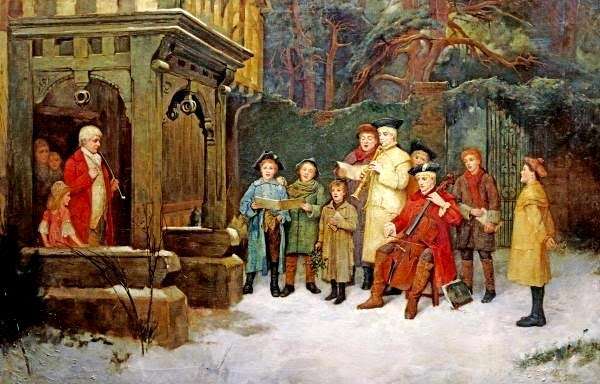
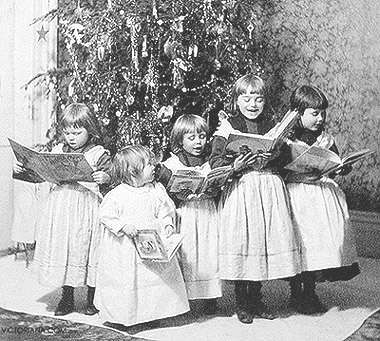
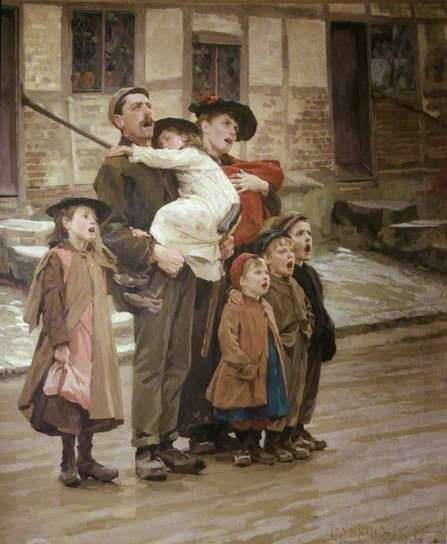
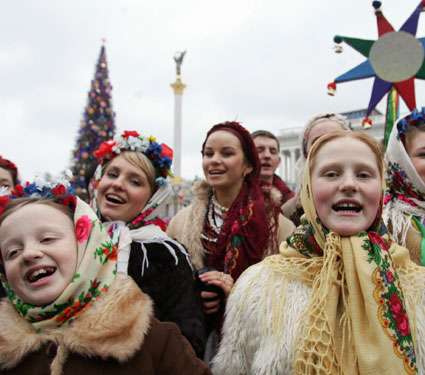
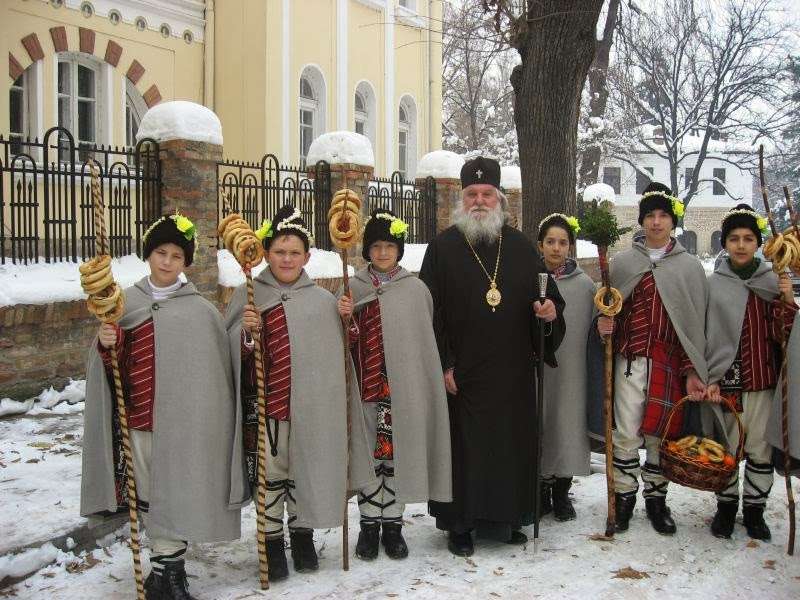
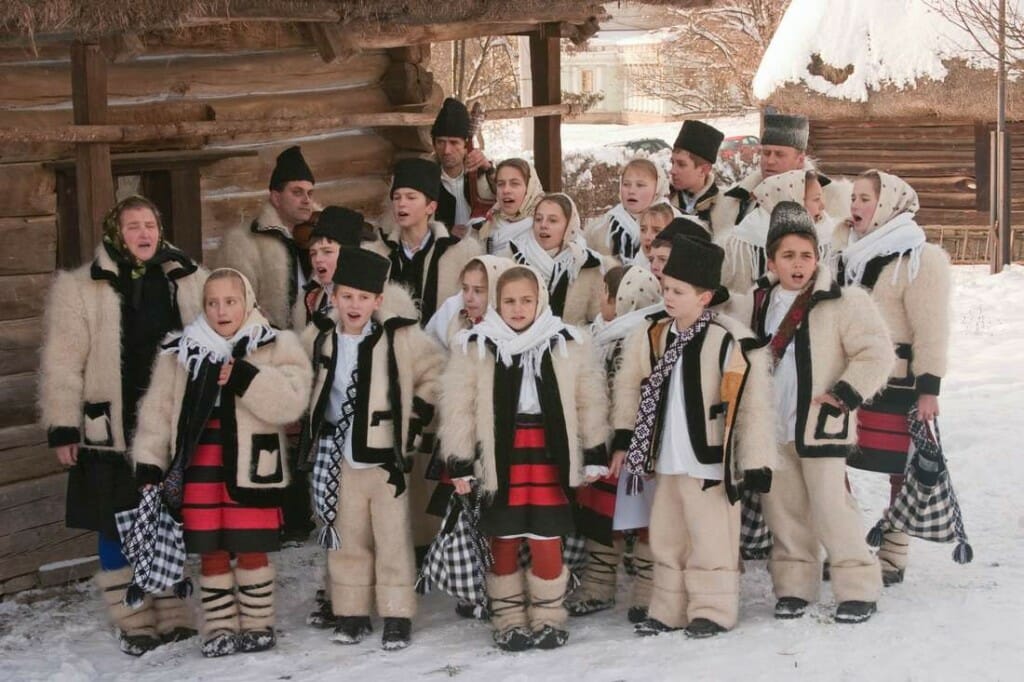
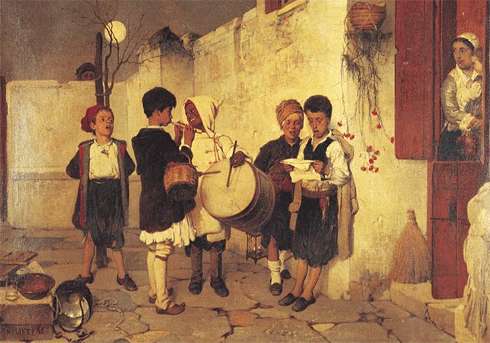
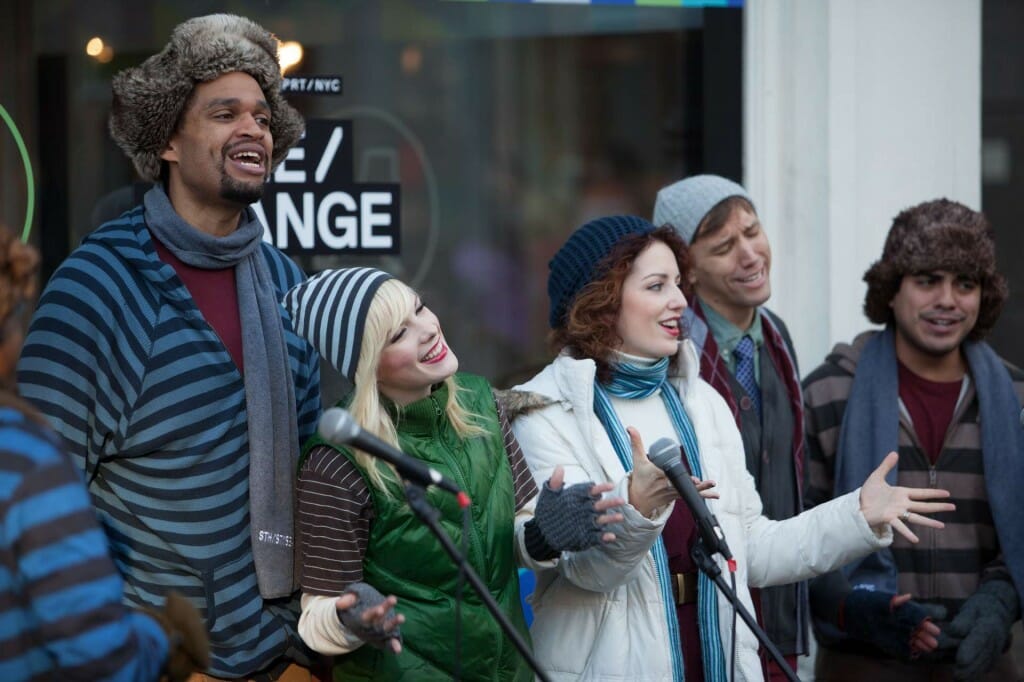
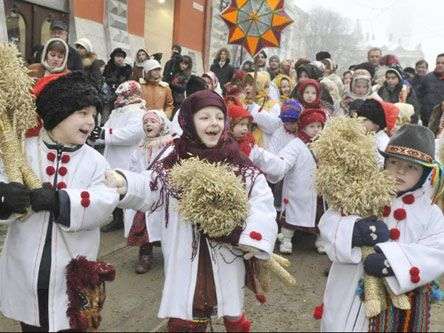

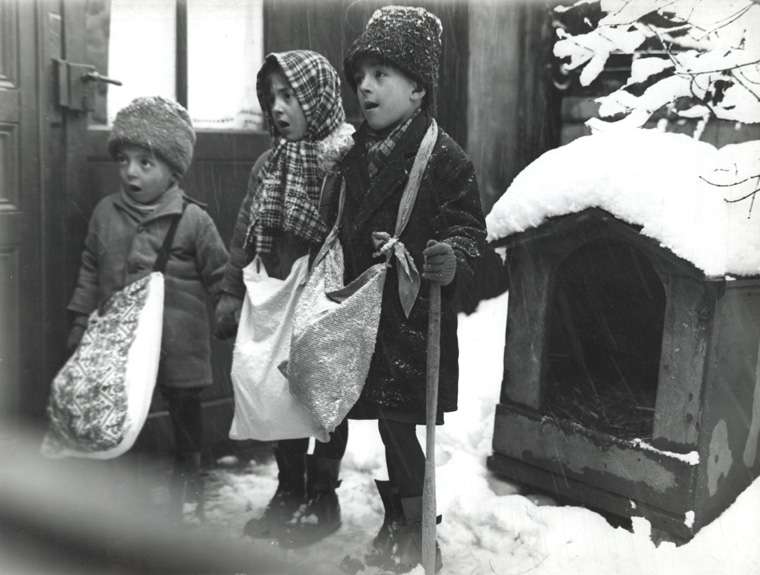
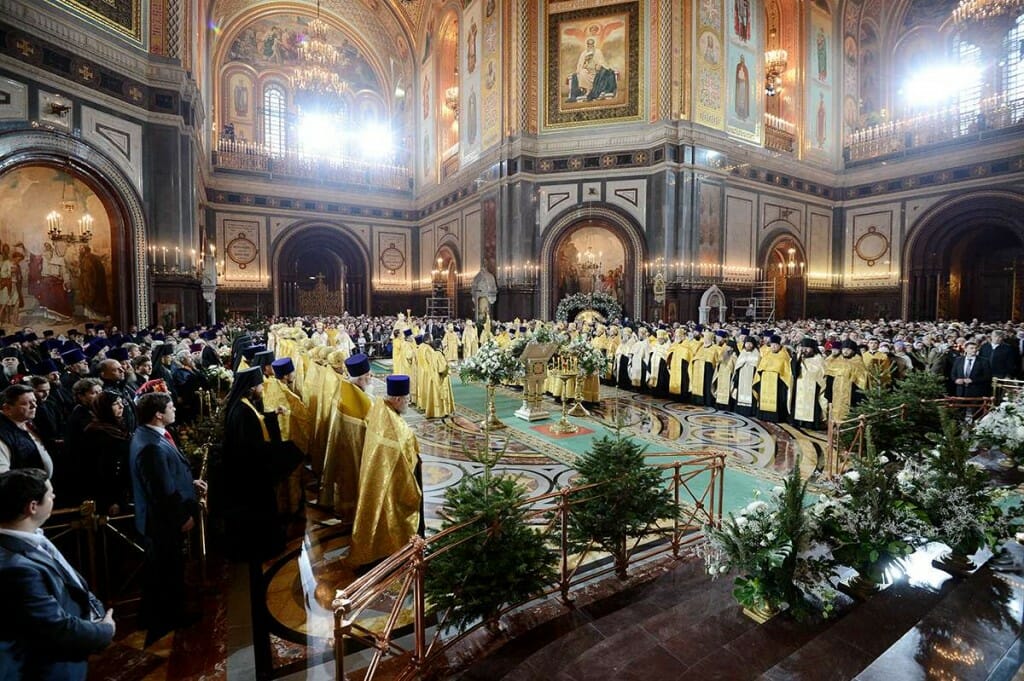
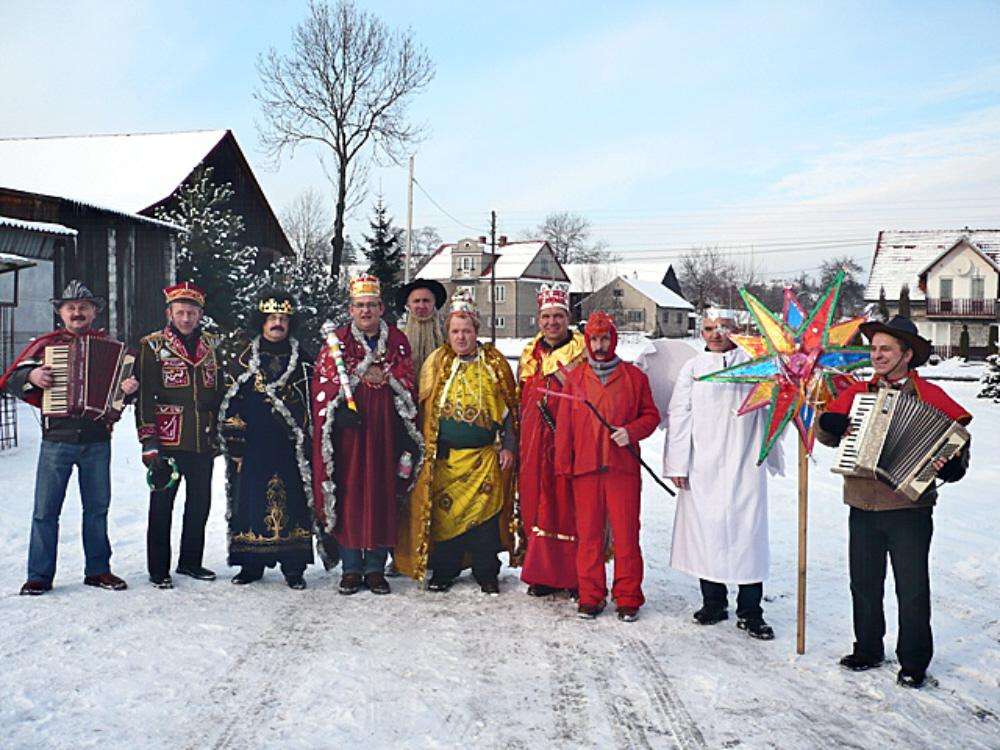
[…] From Hierodeacon Herman, a friend of mine who is the Chapel Music Director at St Vladimir’s Orthodox Seminary (on the Revised Julian/”New” Calendar). Earlier this week the Orthodox Arts Journal interviews Fr. Hierodeacon Herman about his ongoing Choral Advent Calendar Facebook ministry here: […]